For the longest time, I was convinced that a “good” curry had to be an all-day project. I thought it required simmering a dozen spices for hours to build that deep, rich, restaurant-quality flavor.
That all changed on a trip to Thailand. I took a cooking class in Chiang Mai, and my biggest surprise was how fast everything was. The flavors weren’t from simmering all day; they were from fresh, powerful aromatics like lemongrass and lime leaves, flash-cooked to release their oils.
This coconut curry salmon is my 20-minute miracle meal. It’s my love letter to that experience—a way to get that stunning, authentic Thai flavor at home, in one pan, on a busy Tuesday.
This dish is all about balance: the rich, creamy coconut milk, the zesty aromatics, the savory fish sauce, and that perfectly tender, flaky salmon. It tastes complex, but I promise, it’s one of the easiest recipes you’ll ever make.
Why You’ll Love This Recipe
- Ready in 20 Minutes: Seriously. It’s the perfect “I’m-tired-but-want-something-amazing” meal.
- One-Pan Wonder: Everything cooks in a single skillet, which means cleanup is a breeze.
- Restaurant-Quality Flavor: Using fresh aromatics makes it taste just like your favorite Thai restaurant.
- Healthy & Satisfying: It’s packed with healthy fats from the salmon and coconut, and it’s naturally gluten-free and dairy-free.
The Aromatic Stars of Your Coconut Curry Salmon

The secret to this dish isn’t a long list of ingredients. It’s about a smart list of high-impact ones.
- Salmon Fillets: I like to use skin-on salmon. Searing the skin first makes it crispy and adds a ton of flavor to the pan. If you’re not a fan, skinless works just fine!
- Full-Fat Coconut Milk: This is non-negotiable! Do not use “light” coconut milk. The full-fat version is what creates that incredibly creamy, rich sauce that clings to the salmon.
- Thai Red Curry Paste: This is your flavor base. Brands matter! I find that store-bought Thai brands like Maesri or Mae Ploy have the most authentic punch. Start with one tablespoon; you can always add more.
- Lemongrass: This is the heart of the aroma. You don’t eat it, but you smash it to release its lemon-candy scent into the sauce.
- Makrut Lime Leaves: These are the other aromatic powerhouse. They add a floral, citrusy note that is impossible to replicate. Substitution: If you absolutely can’t find them, use the zest of one lime, but add it at the very end.
- Ginger & Garlic: The classic foundation for any good curry.
- Fish Sauce: Please don’t be scared of it! It doesn’t make the curry taste “fishy.” It adds umami—a deep, savory, salty flavor that rounds everything out.
Bringing Your 20-Minute Salmon Curry to Life, Step-by-Step
This is a fast-moving recipe. I highly recommend getting all your ingredients prepped and lined up by the stove before you turn on the heat.
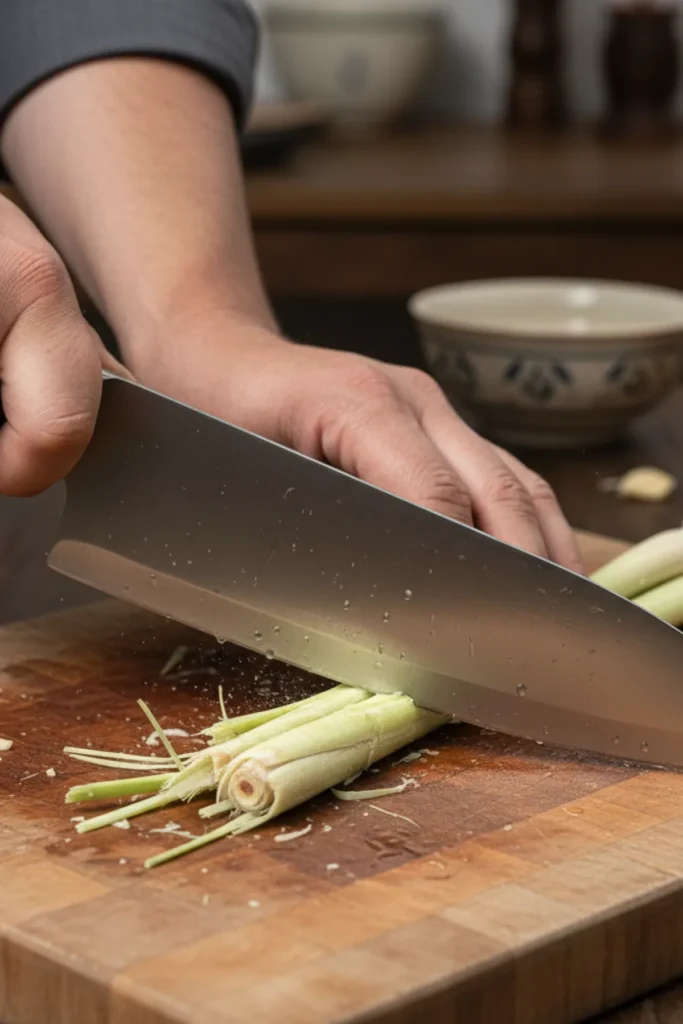
- Prep the Aromatics: Take your stalk of lemongrass. Cut off the woody bottom and the very top green parts. Peel off the dry outer layer. Then, using the flat side of your chef’s knife, smash the stalk all along its length. You’ll smell it immediately! Finely mince your garlic and ginger.
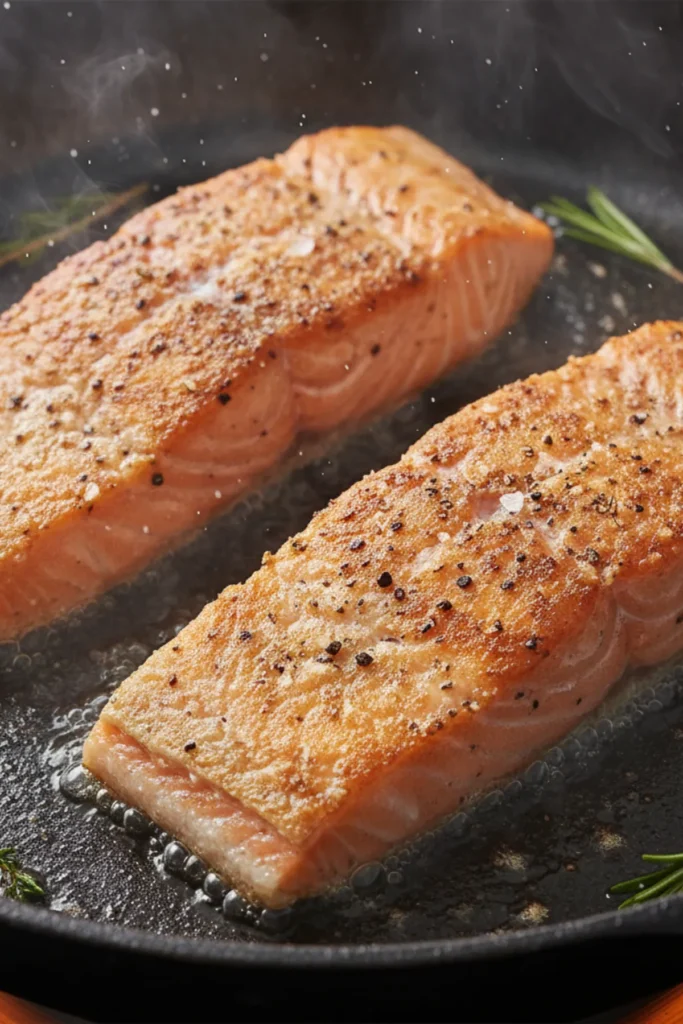
- Sear the Salmon: Pat your salmon fillets completely dry with a paper towel. Pro-Tip: This is the secret to crispy skin! Season both sides with salt. Heat a tablespoon of oil in a large skillet over medium-high heat. Place the salmon skin-side down. Let it cook, undisturbed, for 4-5 minutes until the skin is golden and releases easily, just like in the photo.
- Set Salmon Aside: Flip the salmon and cook for just 1 more minute on the flesh side. It will not be cooked through. Remove it from the pan and set it on a plate.
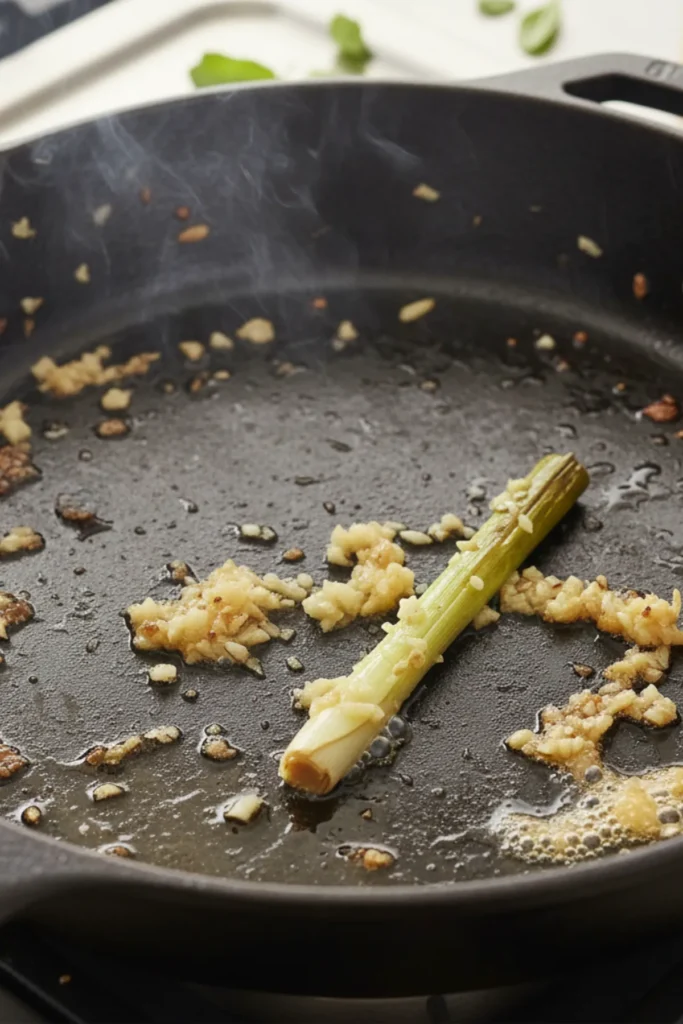
- Sauté Aromatics: Lower the heat to medium. Add the minced garlic, ginger, and the smashed lemongrass stalk to the same pan. Stir and cook for 1-2 minutes until fragrant.
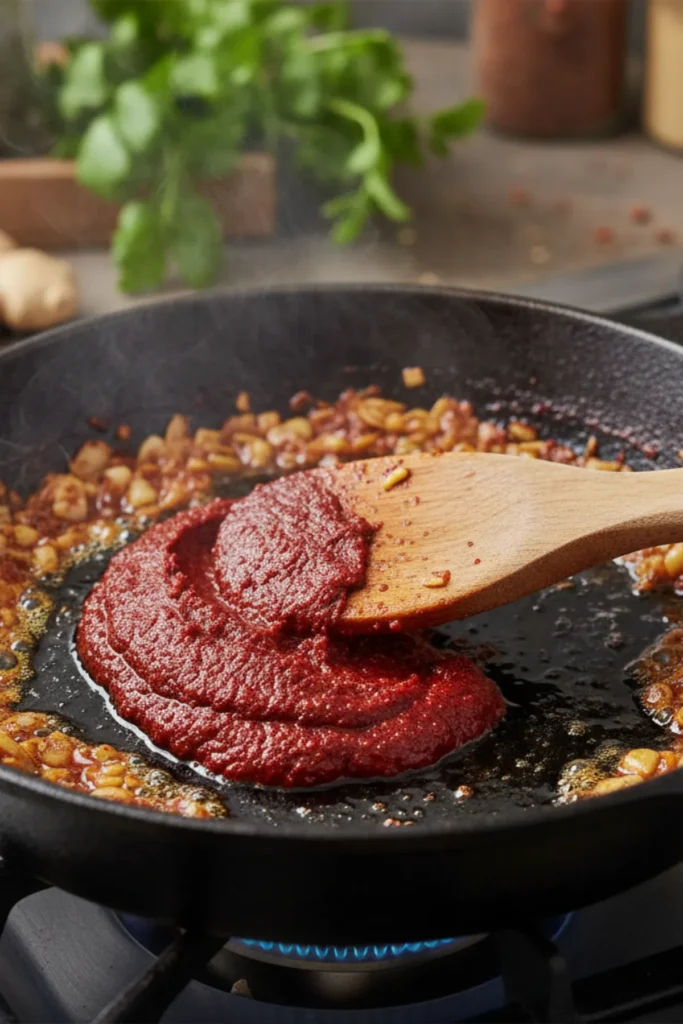
- Bloom the Curry Paste: Add the red curry paste to the pan. This is the most important step! Stir the paste into the aromatics and let it cook for 1 minute, as shown in the picture. It will darken and become super fragrant. This “blooming” unlocks its flavor.
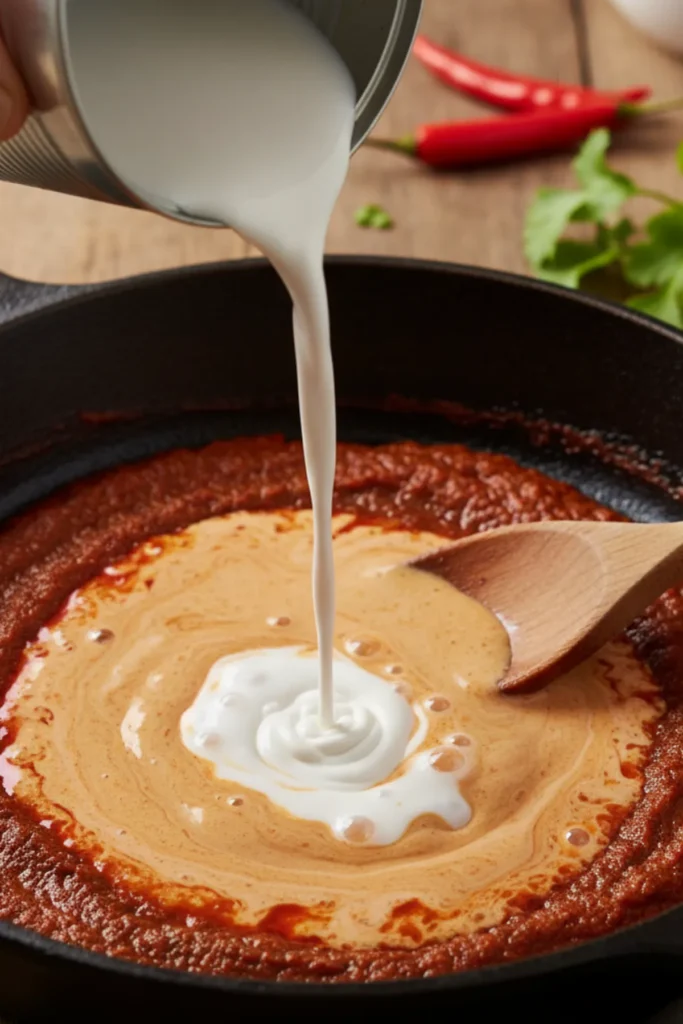
- Build the Sauce: Pour in the entire can of full-fat coconut milk, scraping up any browned bits from the bottom. Add the makrut lime leaves, 1 teaspoon of fish sauce, and 1 teaspoon of brown sugar (or coconut sugar) to balance the flavors.

- Poach the Salmon: Bring the sauce to a gentle simmer (don’t let it boil rapidly). Nestle the salmon fillets back into the sauce, skin-side up. Let them poach in the curry for 3-5 minutes, or until cooked to your liking.
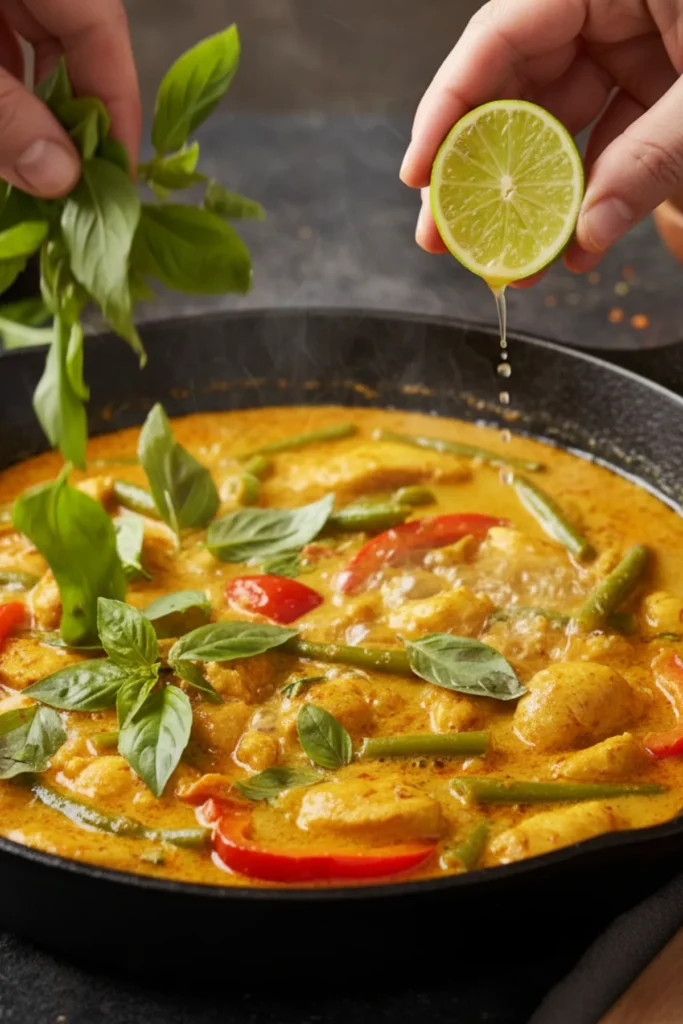
- Finish: Turn off the heat. Remove the lemongrass stalk and lime leaves. Stir in the juice of half a lime and a big handful of fresh basil or cilantro. Serve immediately.
A Few Pro-Tips for the Perfect Coconut Curry Salmon
- Don’t Overcook the Salmon! This is the #1 mistake. Remember, the salmon will continue to cook in the hot sauce even after you take it off the heat. I always aim for a beautiful, slightly-pink center.
- Use Full-Fat Coconut Milk. I said it before, but it’s worth repeating. Light coconut milk will result in a thin, watery, and sad sauce. We want creamy and luxurious!
- Pat That Salmon Skin DRY. If you use skin-on salmon, moisture is the enemy of crispiness. A dry surface hitting hot oil is what creates that perfect, crackly skin.
- “Bloom” Your Curry Paste. Never just dump curry paste into liquid. Frying it in the oil for 60 seconds (see Step 5) wakes up all the fat-soluble flavors and spices, making the final dish 10x more flavorful.
- Smash Your Lemongrass. Don’t just chop it. Smashing it with the side of a knife breaks open the fibers and releases all the fragrant oils into your sauce.
- Simmer, Don’t Boil. Once the coconut milk is in, keep it at a gentle simmer. A rolling boil can cause the coconut milk to “break” or separate.
- Trust the Fish Sauce. It might smell strong from the bottle, but in the curry, it transforms. It adds umami, a deep savory note that salt alone can’t provide. As Healthline explains, fish sauce is rich in glutamates, which are key to creating that “can’t-stop-eating-it” savory flavor.
Coconut Curry Salmon Variations to Try
Once you have this base recipe, you can customize it endlessly! If you love spicy food, add a sliced red Thai chili along with the garlic, or just use a little extra curry paste.
This recipe is already naturally gluten-free (just double-check your fish sauce brand, but most are).
To make this a vegan coconut curry, swap the salmon for a block of extra-firm tofu that you’ve pressed and pan-fried until golden. Add it at the end, just like the salmon. You can also toss in a can of chickpeas. To replace the fish sauce, use tamari or a vegan fish sauce.
Want to add more veggies? This sauce is a perfect base. Toss in a handful of spinach or kale at the very end and let it wilt. You can also add red bell pepper strips or snap peas along with the aromatics in Step 4.
How to Store & Reheat Your Salmon Curry
This curry is best eaten fresh, as salmon can get a strong flavor and a funny texture when reheated.
- To Store: If you do have leftovers, let them cool completely and store them in an airtight container in the fridge for up to 2 days.
- To Reheat: Please, avoid the microwave. It will turn the salmon into rubber. The best way is to pour the curry and salmon into a small saucepan and reheat it gently over low heat until just warmed through.
Perfect Pairings for Your Curry
This rich, fragrant curry sauce was made to be soaked up by rice. A bowl of fluffy, perfect [Link to: Simple Jasmine Rice Recipe] is my number one go-to. It’s the perfect neutral-yet-fragrant base.
I also love to have something fresh and crunchy on the side to cut through the richness. A simple side salad or a quick 10-minute cucumber salad is perfect. And if you’re a fan of dipping, our Easy 2-Ingredient Roti (Flatbread) Recipe is amazing for sopping up every last drop of that sauce.
Frequently Asked Questions (FAQ)
Can I use green or yellow curry paste instead of red?
Absolutely! They have different flavor profiles. Green curry is typically more herbaceous and spicier. Yellow curry is milder, with more turmeric and cumin notes. Both will work beautifully with this method.
What if I can’t find fresh lemongrass or makrut lime leaves?
You can find them at most Asian markets, and many larger grocery stores now carry them. If you can’t, you can buy lemongrass in a tube (paste) in the produce section. For lime leaves, the best substitute is the zest of one whole lime, stirred in at the very end with the lime juice.
Can I use light coconut milk?
I strongly advise against it. The flavor and, more importantly, the texture will be a letdown. The sauce will be thin and watery instead of rich and creamy.
Is this coconut curry salmon spicy?
It has a mild, warm heat that builds. The spiciness comes almost entirely from your red curry paste. If you are sensitive to spice, start with less than the recipe calls for. If you love heat, add more!
Can I add vegetables to this curry?
Yes! This is a great “clean-out-the-fridge” recipe. Add quick-cooking veggies like sliced bell peppers, zucchini, or snap peas in Step 4. Add leafy greens like spinach or bok choy in the last minute of cooking (Step 8).
Can I make this ahead of time for meal prep?
I wouldn’t recommend making the full dish with the salmon ahead of time. However, you can make the curry sauce (Steps 1-6) and store it in the fridge for 3-4 days. When you’re ready to eat, just heat the sauce, sear your salmon, and poach it in the sauce.
My sauce seems too thin. How can I fix it?
This usually happens if you use light coconut milk. If you used full-fat, just let it simmer (before adding the salmon back) for a few extra minutes. It will reduce and thicken up perfectly.
Do I have to sear the salmon first?
You could just poach the raw salmon in the sauce, but you’d be missing out on two things: 1) delicious, crispy salmon skin, and 2) the flavorful browned bits (fond) in the pan that form the base of your sauce. I highly recommend searing!
Can I use frozen salmon?
Yes. Just make sure it is 100% thawed before you start. Pat it very dry, as frozen fish tends to hold extra moisture.
What’s the difference between ginger and galangal?
They look similar, but they’re different! Ginger is pungent, spicy, and zesty. Galangal (often used in Thai cooking) is sharper, more peppery, and has a citrus-pine flavor. Ginger is a great substitute if you can’t find galangal.
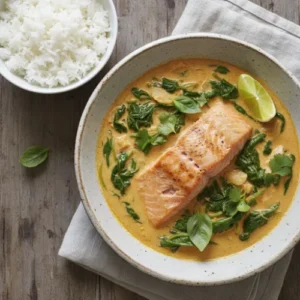
Coconut Curry Salmon with Lemongrass and Lime Leaves
Equipment
- Large skillet with a lid
- Chef's knife
- Cutting Board
Ingredients
- 1 tbsp coconut oil (or avocado oil)
- 2 (6-oz) salmon fillets (skin-on or skinless)
- Salt (to taste)
- 2 cloves garlic (finely minced)
- 1 tbsp fresh ginger (finely minced)
- 1 stalk fresh lemongrass
- 1 tbsp Thai red curry paste
- 1 (13.5 oz) can full-fat coconut milk
- 2 makrut lime leaves
- 1 tsp fish sauce
- 1 tsp brown sugar (or coconut sugar, optional)
- 1 tbsp fresh lime juice
- 1/4 cup fresh basil or cilantro (roughly chopped)
Instructions
- Prep Aromatics: Cut off the bottom and top third of the lemongrass stalk. Peel the dry outer layer. Using the flat side of your knife, smash the stalk to release its oils.
- Sear Salmon: Pat the salmon fillets completely dry and season with salt. Heat the oil in a large skillet over medium-high heat. Place the salmon skin-side down and cook for 4-5 minutes, undisturbed, until the skin is crispy.
- Flip & Remove: Flip the salmon and cook for 1 more minute. The salmon will not be cooked through. Remove it from the skillet and set it on a plate.
- Sauté Aromatics: Lower the heat to medium. Add the garlic, ginger, and smashed lemongrass stalk to the pan. Cook for 1-2 minutes until fragrant.
- Bloom Curry Paste: Add the red curry paste. Stir it into the aromatics and cook for 1 minute until it darkens and smells fragrant.
- Build Sauce: Pour in the coconut milk, scraping up any bits from the bottom. Add the lime leaves, fish sauce, and brown sugar. Bring to a gentle simmer.
- Poach Salmon: Return the salmon to the skillet, skin-side up. Nestle it into the sauce. Cover the pan, reduce heat to low, and let the salmon poach for 3-5 minutes, or until cooked to your liking.
- Finish: Turn off the heat. Remove and discard the lemongrass stalk and lime leaves. Stir in the fresh lime juice and chopped basil or cilantro. Serve immediately over rice.
Notes
Conclusion
This coconut curry salmon is the recipe that taught me that “fast” and “flavorful” can absolutely go hand-in-hand. It’s a dish that feels special and indulgent but is secretly one of the easiest things in my weekly rotation.
If you loved this quick, one-pan meal, you have to try our 15-Minute Spicy Garlic Shrimp next!
Ready for your next kitchen adventure? Explore more delicious recipes here at SpoonnSpice!



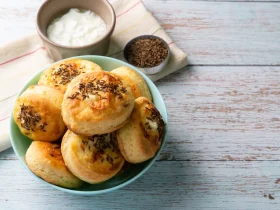

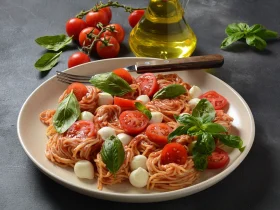
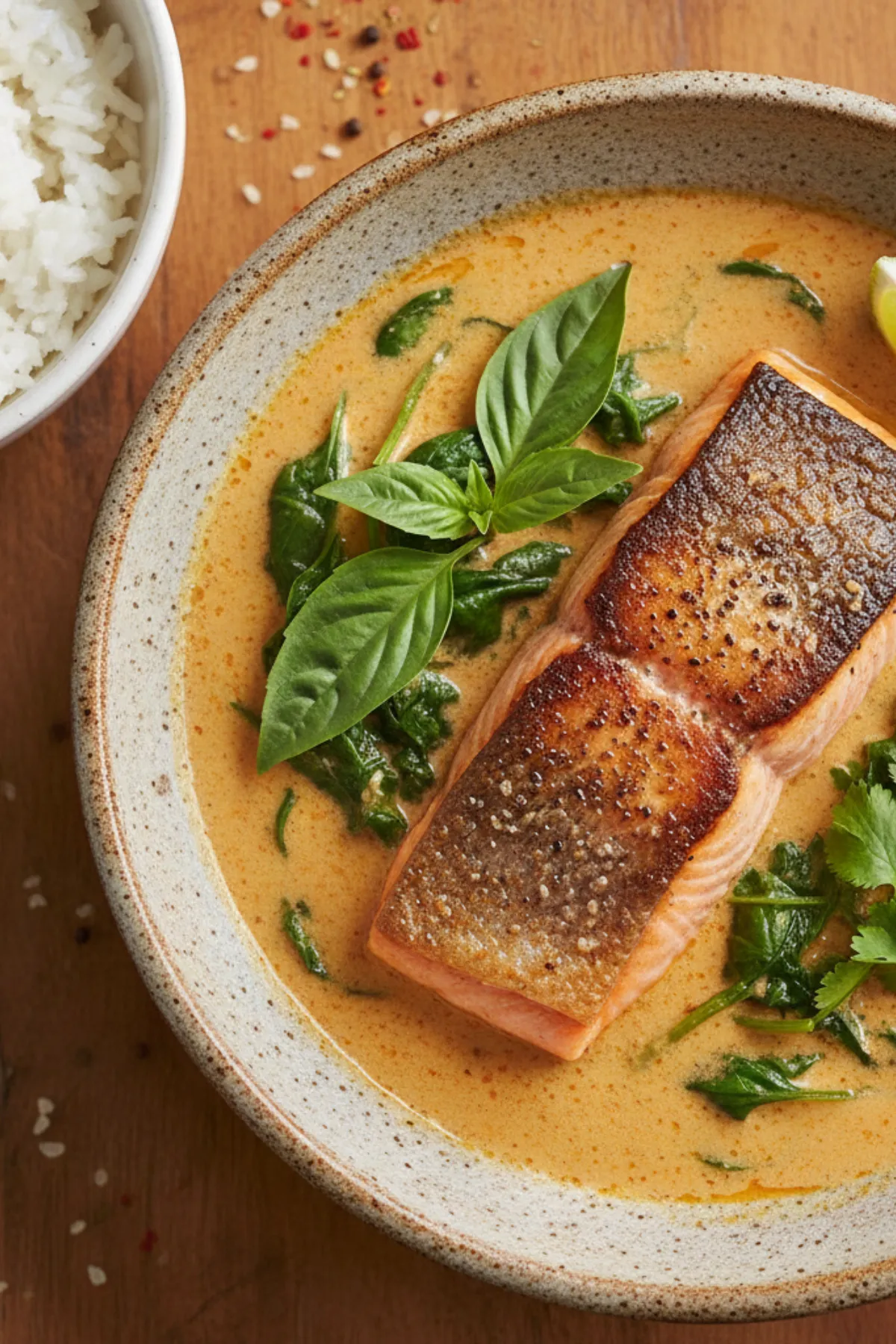



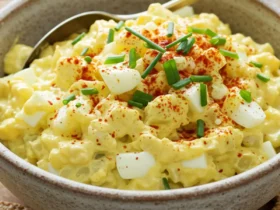
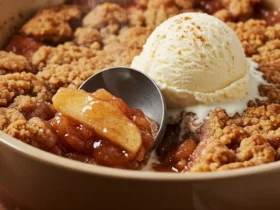
Leave a Review